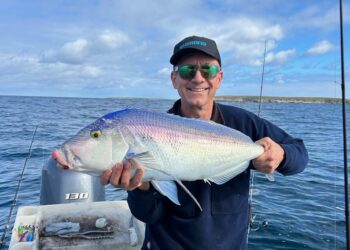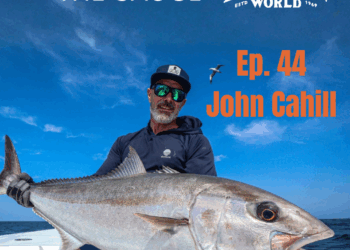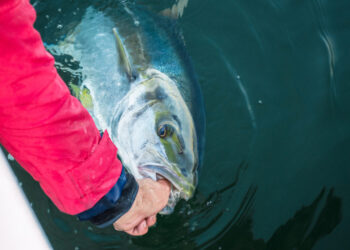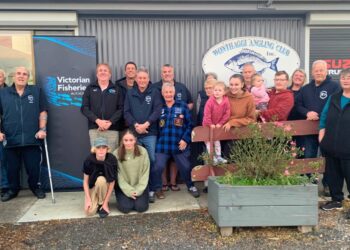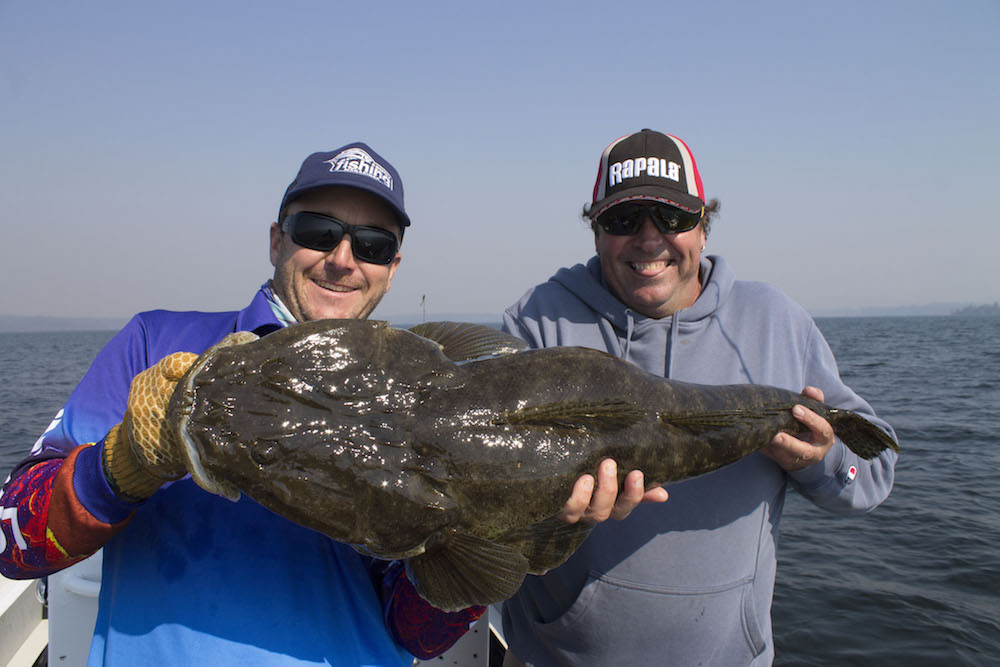
AN initiative developed by NSW anglers will aim to protect breeding size dusky flathead while providing enhanced opportunities for the state’s 850,000 recreational fishers.
Bega MP Andrew Constance said the introduction of a trial Code of Practice for the release of “trophy sized flathead” in two South Coast estuary systems was a great example of modern recreational fisheries management.
“Local anglers at Tuross Head and St Georges Basin approached the Department of Primary Industries last year to develop management strategies to enhance flathead fishing in their local fisheries by promoting catch and release of these popular estuary sportfish,” Constance said.
“The result of this collaboration between the recreational fishing community and DPI is the development of a trial “trophy fishery” concept where anglers will be encouraged to release big female flathead more than 70cm in length,” he said.
The trial will also include surveys, tagging and research to provide more information on dusky flathead populations in these locations.

Catch and release is recognised as an important means of ensuring the sustainability of recreational fisheries. Research by NSW DPI indicates dusky flathead have a very high survival rate when released.
The Code of Practice developed for the trophy fisheries will provide detailed information on best practice catch and release techniques.
Mr Constance said as well as maximising flathead stocks and providing enhanced angling opportunities, the trophy fishery concept has the potential to increase local tourism.
“Both Tuross Head and St Georges Basin are designated Recreational Fishing Havens where no commercial netting is allowed and these areas will be promoted as great spots to go if you want the best chance at catching quality fish,” Constance said.
The trophy fishery Code of Practice is voluntary and specific to these two locations.
It will be implemented for a 12-month trial period after which the benefits will be reviewed and community support will be assessed.
If the trial project in St Georges Basin and Tuross Lake is successful, there is potential to expand the concept to other systems for flathead as well as other suitable species.
More information on the trophy fishery concept will be available as the trial progresses. See the NSW DPI website for information on flathead bag and size limits.
Trophy flathead code of practice
- Use appropriate tackle to enable fish to be subdued as quickly as possible. Four to six kilo outfits are preferred when targeting trophy flathead.
- Use lures when possible to avoid deep hooking. If using bait, non-offset circle hooks in 1/0-4/0 are preferred. If a fish is deep hooked, cut the line as close as possible to the fish’s mouth before release.
- Use large knotless landing nets to land trophy flathead. Leaving the fish in the net in the water for 3-5 minutes will allow it to recover, making for much easier and safer handling.
- Handle flathead with wet gloves or a wet towel. If measuring your fish on a “brag mat”, ensure the mat is wet. Minimise the time the fish is out of the water. Support the fish’s weight with both hands. Do not “hang” the fish by its jaws, either by hand or with “lip gripper” style tools.
- Carefully release the fish as close as possible to where it was caught. If required, hold the fish in the water until it recovers and can swim away.
- If keeping flathead for the table, humanely dispatch the fish and place it in a saltwater ice slurry.











